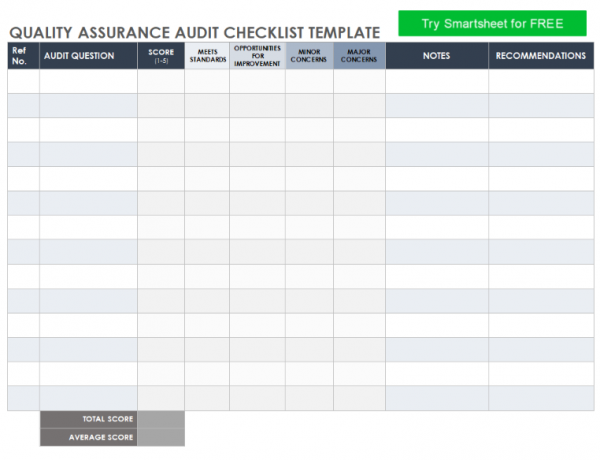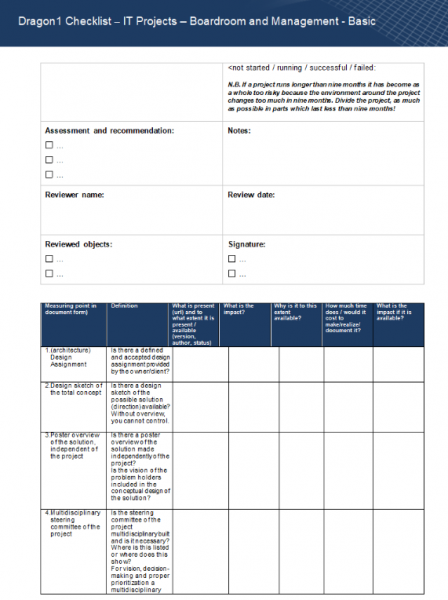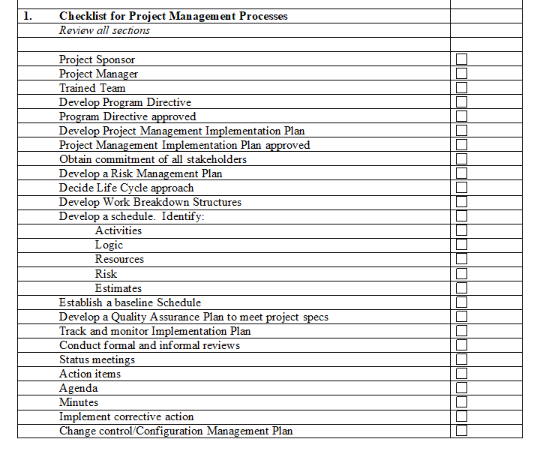The main difference between a quality audit and a quality inspection is that audit is a systematic process that assesses whether quality activities and results comply with planned arrangements and whether these arrangements are implemented effectively and are suitable for achieving objectives. Meanwhile, quality inspection is the process of measuring, examining, and testing products to determine whether they meet specified requirements.
A quality audit should cover all, including quality planning, quality control, quality assurance, and quality improvement.
The findings of a quality audit can be used to improve the effectiveness of an organization’s quality management system and help prevent problems in the future.
There are two main types of quality audits: first-party audits and second-party audits.
- First-party audits are conducted by an organization’s own internal quality assurance staff.
- Second-party audits are conducted by an external body, such as a certification body or a customer.
The scope of these audits can vary depending on the purpose of the audit.
For example, a certification body may conduct a comprehensive audit of an organization’s entire QMS, while a customer may only audit a specific part of the QMS that pertains to their product or service.
Quality Inspection Definition
Another aspect of quality management is inspections.
But first what are they:
- Inspection is a process of verifying whether a project meets specified requirements. It is a formal review process that is conducted at predetermined intervals during the project lifecycle. The purpose of the inspection is to identify errors, defects, or non-conformities in the project deliverables so that corrective action can be taken to address them.
- Inspection is a key component of project quality management and is typically carried out by independent quality assurance inspectors. The results of inspections are typically recorded in a report which is then shared with the project team.
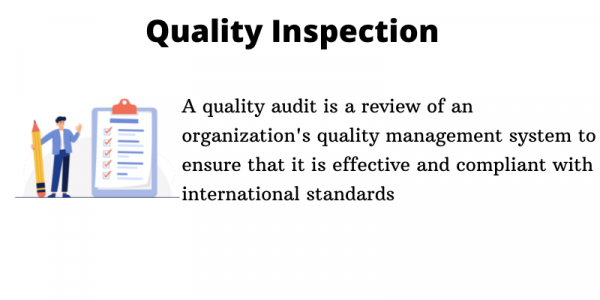
Quality Audit Definition
A quality audit is a review of an organization’s quality management system to ensure that it is effective and compliant with international standards. This is a systematic review of an organization’s quality management system (QMS) to verify that it conforms to the requirements of a standard or other regulatory requirements. It can also be used to assess the effectiveness of the QMS and identify any areas in need of improvement.
It can be conducted internally by an organization’s quality assurance team or externally by an independent body.
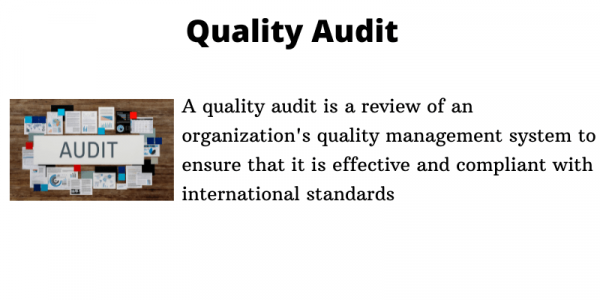
The purpose of a quality audit is to assess the effectiveness of an organization’s quality management system and identify any areas that need improvement.
Audits are conducted on a regular basis, while inspections are carried out at specific points in time.
Audits cover all aspects of quality management, while inspections focus on a specific product or process.
Audits are conducted by an independent third party, while inspections are usually carried out by the company itself.
Audits are used to assess compliance with quality standards, while inspections are used to confirm whether products meet specified requirements.
When to conduct a quality audit?
As you create your project schedule, you will need to decide when to conduct quality audits.
Quality Audit Template Excel
It can be conducted at different stages of the project lifecycle but is typically done towards the end of the project to assess whether the quality requirements have been met.
There are a few different factors to consider when deciding when to conduct quality audits.
First, you will need to consider the size and scope of your project. Larger projects will require more frequent audits than smaller projects.
Secondly, you will also need to consider the complexity of your project. More complex projects will require more frequent audits than simpler projects.
The frequency of quality audits will also depend on the stage of your project.
- For example, you will likely need to conduct more quality audits during the early stages of your project, when more changes are being made. As your project moves closer to completion, the frequency of audits can be reduced.
Examples of Quality Audits vs Inspections
There are many different types of quality audits, but some common examples include:
- Reviews of project documentation (e.g. requirements, plans, etc.)
- Inspections of project deliverables (e.g. code, designs, etc.)
- Interviews with project stakeholders (e.g. project manager, developers, etc.)
Another view can be in IT:
An example of a quality audit in the IT industry (x4) would be to ensure that all software products meet the minimum quality standards set by the company. This would involve testing the software
products against these standards and then reporting any findings to the management team.
Quality Audit Templates Word
Another example of an audit in IT would be to assess the effectiveness of the company’s quality management system. This would involve auditing the system itself and then interviewing employees to see how well it is working. Once again, any findings would be reported to management.
Role of a Quality Manager
The role of the project manager is to ensure that the quality audit team has everything they need to carry out the audit successfully.
This includes providing adequate resources, communicating with stakeholders, and ensuring that the quality audit team has access to all relevant information.
The project manager is also responsible for ensuring that the audit team is able to complete their work in a timely manner.
- This means coordinating schedules, appointing team members to specific tasks, and monitoring progress. In some cases, the project manager may also be responsible for conducting the audit themselves (which rarely happens).
As the project manager, you are responsible for ensuring that the audit goes smoothly.
You will need to coordinate with the auditors and provide them with the necessary information and documents.
You will also be responsible for ensuring that the audit team has access to the project site and that they are able to speak to the project team members.
In addition, you will need to review the audit report and make sure that all of the findings are addressed.
Finally, you will also be responsible for presenting the findings to the project sponsor and other stakeholders.
What is a Quality Audit in Project Management?
In project management, a quality audit is a type of quality check of project activities and deliverables to ensure that they meet quality standards. They can be conducted at various stages of the project lifecycle, from planning to execution to closure.
Why is it important for your organization?
There are a few different reasons why you might want to conduct a quality audit. For example, you might want to check that the quality management system is being followed and that it is effective in managing risks and ensuring that deliverables meet the required quality standards. Alternatively, you might want to use a quality audit as part of a project review to identify areas for improvement.
What are the main differences between Inspection and Audit in Project Quality Management?
An audit is usually conducted by an external body, while a quality inspection is typically conducted by the company itself. Another one is that A quality audit assesses procedures, while a quality inspection assesses the product itself. And finally, an audit is typically conducted on a regular basis, while an inspection is conducted as needed.

